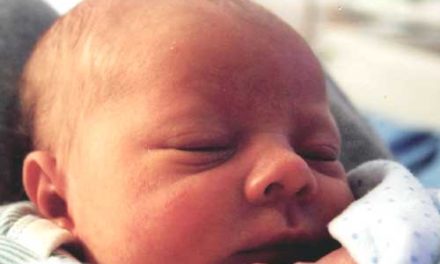You are about to breastfeed and have no clue what to do and you wonder what the best approach is. Well, truly this is a technique that you will learn just as your baby will.
You are a new team. The most important thing that I can tell you is to try and start off correctly. You want your baby to breastfeed with the entire nipple and areola area in the baby’s mouth, not just the tip of the nipple. The baby can thus ‘latch’ on rather than suction on.
This will reduce the surface area upon which the baby suckles and therefore reduce the amount of discomfort and problems, such as cracked and sore nipples. Initiating breastfeeding soon after delivery has many benefits. It starts an immediate bonding process. Probably, of even more significance, it causes the amino acid oxytocin to be released from the pituitary gland, and this causes the uterus to contract, resulting in less blood loss from the uterus. It is also this uterine stimulation that results in ‘after pains’. This amino acid (octapeptide) has also been synthesized based on the physiological properties of oxytocin and is applied clinically to induce (initiate) and augment (increase the intensity and frequency of) labour, and to stop bleeding after delivery. Oxytocin is routinely given after delivery, in most centres. Some doctors prefer to give it after the baby’s anterior shoulder is delivered, and others may give it once the placenta has delivered.
Over the years I have found that giving it after the placenta is delivered results in fewer retained placentas in my practice. Remember that in the beginning it is impossible to know if your baby is getting enough breast milk and this is why weighing the baby is so vital. Each baby has a different schedule in the beginning. Some will cluster feed and others feed continuously with breaks in between. So some clues that the baby is getting enough are that he feeds at least 8 times a day, is satisfied after a feed, swallows well when feeding, has 5 to 6 wet cloth diapers a day or 4 to 5 disposable diapers after the third day of birth, and has soft stools 2 to 3 times a day in the first month. Another indication is that your breasts are full before feeds and soft after feeds.
Please bear in mind that I am not a lactation specialist, nor do I profess to be an expert on breastfeeding, but this is a process that may take a good 2 to 3 weeks to learn and to be accomplished in. As difficult as it sounds there is no better approach than good old, natural breastfeeding in the initial stages of your baby’s life. Remember that initially the only milk you produce is a very thin form called colostrum. It is very rich and gives your baby nutrition and protection against sickness. Start off breastfeeding by being comfortable and by making sure that your baby is comfortable too. Positioning is an essential part of this.
As I am sure you already know, the advantages are endless. They include bonding with your baby, providing the most natural form of nutrition, and passing on passive immunoglobulins, which will give your baby protection against most illnesses in the first three months. There is one last added bonus to breastfeeding— it burns 500 calories a day. It is a very effective way of losing weight! To toughen up the areola area after each breastfeed, you can rub on some lanolin, or you can express some colostrum and use an ordinary 60-watt light bulb in a lamp to dry the colostrum on the areola and nipple area. It will take several days for your breast milk to come in, then the breasts become hard and engorged, and the baby can start to feed and gain weight.







